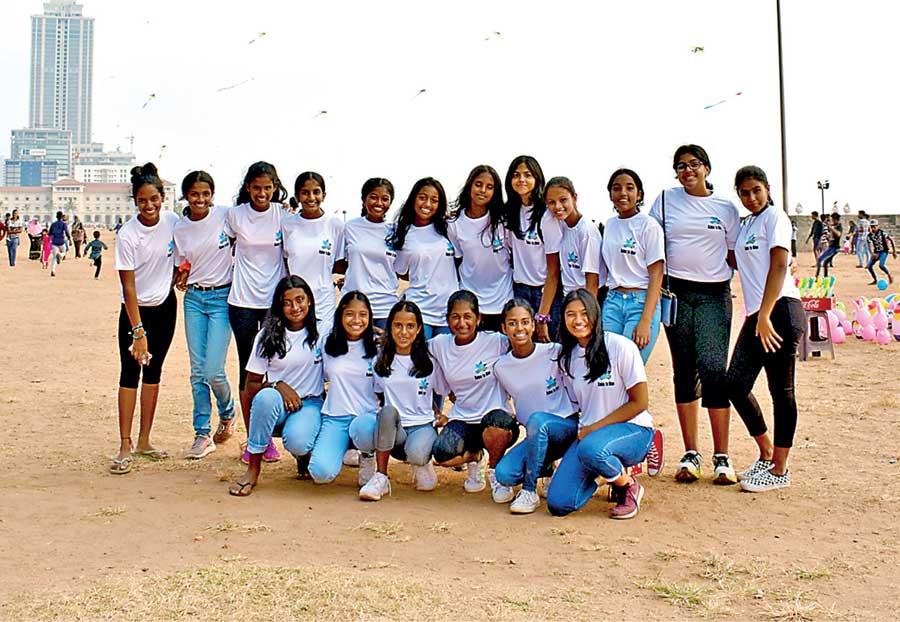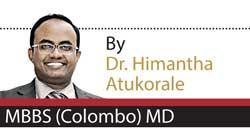Reply To:
Name - Reply Comment

JIA Warriors - Pix by Waruna Wanniarachchi
Juvenile Idiopathic Arthritis (JIA) is a condition that manifests in children. A juvenile is a young person, medically defined as a child less than or equal to 16 years of age. Idiopathic means without a cause. Arthritis is a joint inflammation or a special type of joint swelling. Therefore as the name implies JIA happens in children less than or equal to 16 years of age without a known trigger and involves joints. For us to diagnose JIA properly the duration of arthritis should be ideally six weeks or more. There are various sub-types of JIA.

Why awareness is important
Juvenile Idiopathic Arthritis happens in children and the reason of joint swelling is sometimes attributed to other causes like sports injuries. Ignoring joint swelling and not starting the child on proper treatment can give rise to joint damage. This is because this specific type of arthritis happens in a growing child. Early treatment is crucial to prevent disability in Juvenile Idiopathic Arthritis. If changes happen within the joints of a child, who is rapidly gaining height, there might be discrepancies in arm or leg lengths that could last a lifetime. JIA once diagnosed, requires treatment sometimes for several months or years. Properly treated childhood arthritis allows the patient to engage in sports and other activities without hindrance.
Identifying JIA
There are seven different varieties of Juvenile Idiopathic Arthritis. Each type is present in its own unique way. Oligoarticular JIA is a condition where four or lesser number of joints are involved. Polyarticular JIA presents with five or more joints showing swelling and related inflammatory changes. There are two sub-categories of polyarticular JIA.
Systemic JIA is an illness which has components like fever for around two weeks with joint swelling, lymph gland enlargement, skin rashes, organ enlargement and issues with the covering layers of the heart (pericardium) or lung (pleura). This is usually seen in children under five years of age. It can even happen in infants. The same symptoms can be seen in children with severe infections and rarely in cancer.
Psoriatic JIA children have a scaly rash and joint swelling. Enthesitis related JIA is when the patient has swelling of ligament / tendon attachments to a bone accompanied by pain of the spine and a family member having similar sort of illness. There is a variety of JIA called undifferentiated where the presentation does not fit in to other categories.
Joint inflammation is the hallmark of JIA. This is not just swelling of the joint but certain other features like a bit of redness of the overlying skin, warmth to touch and pain when applying pressure over the affected area. Joint inflammation signifies that the body’s own immunity is causing changes within that specific joint.
Diagnosis
There are certain basic as well as special tests that are done in Juvenile Idiopathic Arthritis to aid the doctor in treating this disease in a proper manner. A full blood count is useful to detect certain changes in the number of blood cells. ESR and CRP are tests done to measure the disease severity or inflammation. Antibody tests such as rheumatoid factor and ANA are very useful in JIA.
HLA-B27 is a special genetic marker done in some categories of JIA. Imaging through ultrasound scans are also useful to do.
Treatment options
There are drugs that control the disease that we prescribe early. These medications eliminate active disease and help the child to lead a pain-free and most importantly an active lifestyle. A variety of drugs are utilised by the doctors to treat JIA at a very tender stage. Having said that, even late presentations can be treated effectively.
Non-Steroid Anti-Inflammatory Drugs (NSAIDS), steroids and Disease-Modifying Anti Rheumatoid Drugs (DMARDs) are some of the medications that are used all over the world. It is very important that these JIA children are constantly reviewed and that the medication is continued. Non-pharmacological treatment methods like physiotherapy and occupational therapy are also very useful to maintain joint mobility and muscle strength.
What are flares and relapses?
A flare happens in JIA when a patient who is already receiving treatment becomes more symptomatic. The child might complain of joint swelling and pain in new areas and also might feel ill and feverish. Activities will be minimal during a flare-up.
A relapse is when a JIA patient who is seemingly cured suddenly becomes unwell. This happens after a period of improvement. For both a flare and a relapse it is important for the parents to seek immediate medical treatment.
Where should JIA patients receive treatment from?
Juvenile Idiopathic Arthritis patients should ideally be followed up at government hospital rheumatology or paediatric clinics. There are several reasons why the parents should seek government hospital clinics. As mentioned before the treatment might last for months or years. Some of the modern treatment modalities like biologics are quite expensive and are only available free-of-charge in government hospitals. Certain investigations are also expensive and sometimes the patients might require complex scanning methods frequently. So we always encourage these patients and parents to seek specialised care at government hospitals.
The writer is a Consultant in Rheumatology and Rehabilitation and Fellow of American College of Rheumatology